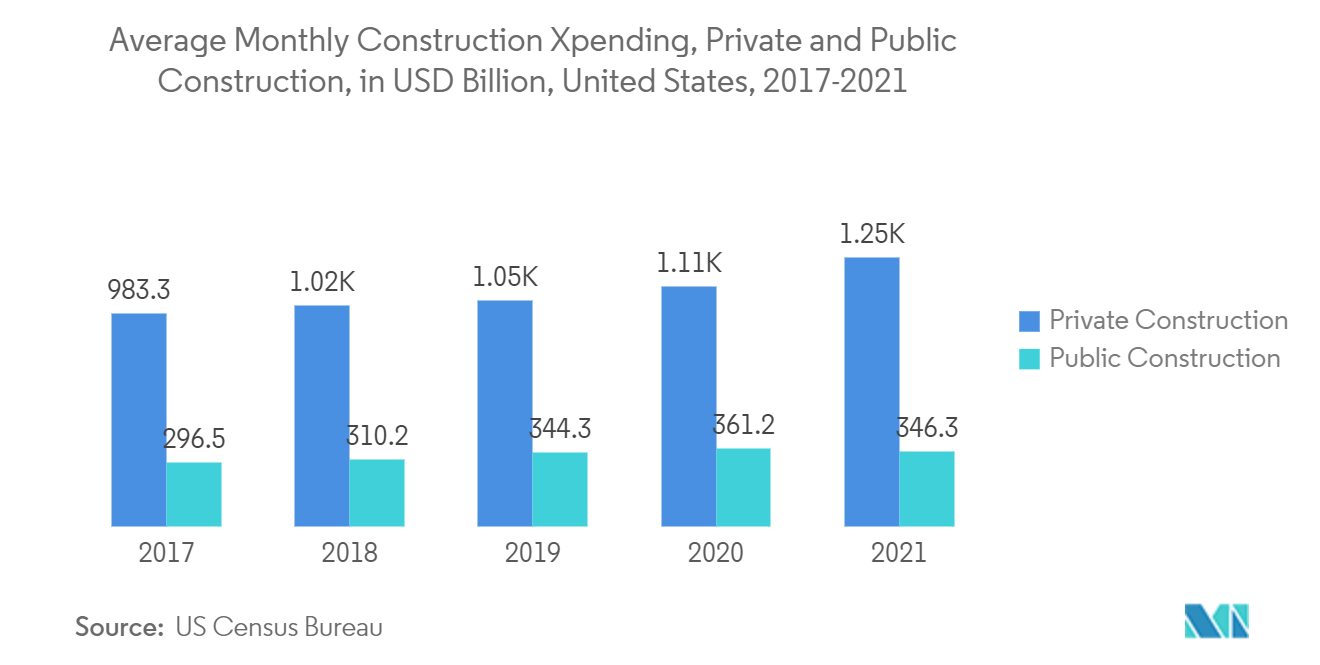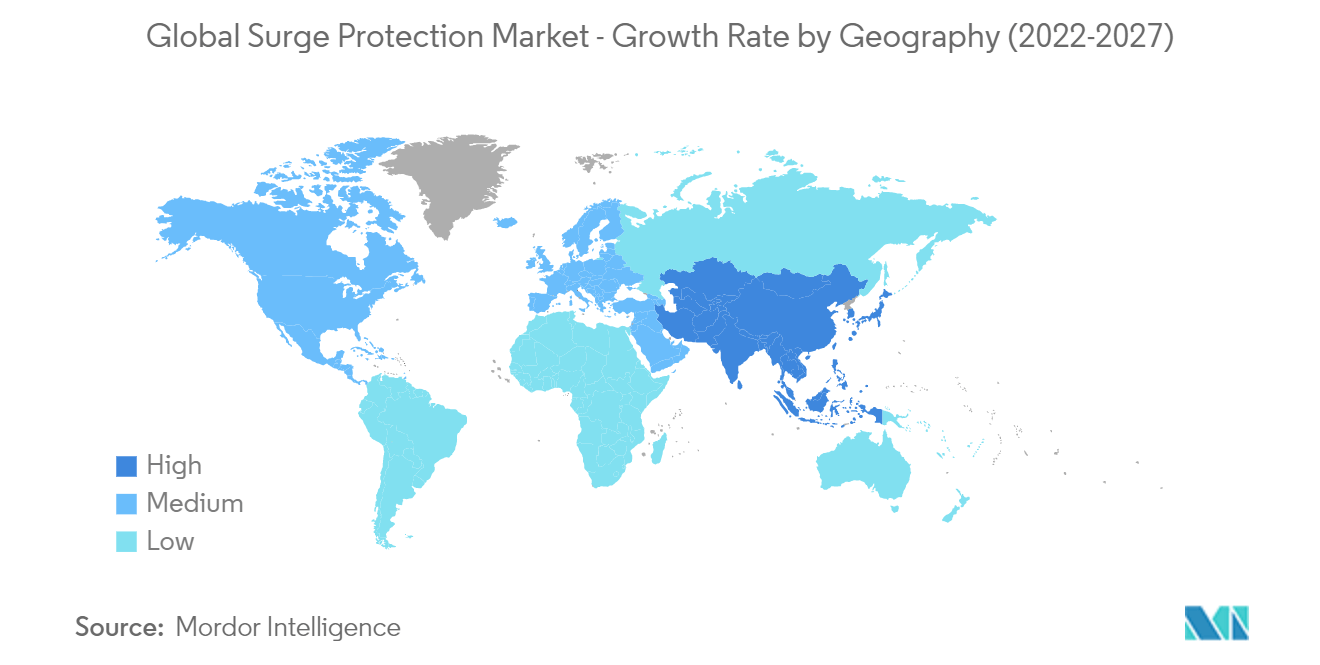Market Trends of Global Surge Protection Devices Industry
Residential Segment is one of the Factor Driving the Market
- To meet the increasing demand of the customers and the rise in the residential sector is driving the market players to incorporate new features in the existing product or develop new products to meet the customer demands. For example, Siemens, The new BoltShield QSPD series of surge protection is specially made for residential applications and offers the finest defense against both internally and externally generated surges. Due to cost and space concerns, many buildings only have one SPD, which is situated in the primary incoming load center. This contravenes IEEE recommendations, which call for cascading SPDs throughout the building.
- According to Statistics Norway, Housing Starts in Norway increased to 2777 units in May from 1929 units in April of 2022. Furthermore, in January 2022, The Norwegian municipality of Stavanger gave Swedish construction company Skanska a USD 85.5 million (NOK750 million) contract to develop a new municipal town center. The Storhaugneighborhood of Stavanger will receive the LervikQuarter development project. The 26,000m2 structure will have parking places, a primary school, a kindergarten, offices, a grocery shop, a multipurpose hall, and other amenities. Increasing construction projects like this will enhance the HVAC equipment market's growth. An increase in residential projects will drive the market.
- With affluent countries like the United Kingdom, France, Germany, Denmark, Switzerland, Luxembourg, Belgium, and other Scandinavian countries EU has one of the highest per capita income and GDP in the world. According to IMF, the European Union Gross Domestic Product in 2020 was USD 15,167 billion and is expected to reach USD 21,183 billion by 2026. The region's per capita income is also high, with seven European countries being in the top seven in the world. This allows the European citizens to spend higher on Surge protection devices.
- According to the United States Census Bureau, as of May 2021, the private housing authorized by building permits was at a seasonally adjusted annual rate of 1,681,000. The value was 34.9% above the May 2020 rate. The increase in residential units creates growth opportunities for the Surge protection device market.
- Even though Mumbai has one of the highest real estate costs in the nation, several factors are currently in play that has made buying a home in this city a practical alternative. A recent real estate study in India found that home sales in the country's top seven cities exceeded Q1 2020 by more than 29 percent, totaling 58,920 units. This is significantly higher than pre-COVID levels, indicating an economic improvement. In the seven cities, 62,130 residential units were constructed in the first quarter of 2021, an increase of 18% from the previous quarter and 51% year over year. The top seven cities in India are National Capital Region (NCR), Mumbai Metropolitan Region (MMR), Bengaluru, Pune, Hyderabad, Chennai, and Kolkata. Such a huge increase in the residential sector will drive the studied market.

Asia Pacific Holds the Major Share of the Market
- The china, taiwan, japan,and rest of the region make up the other subgroups of the asia pacific surge protection devices market. The construction of hospitals, offices, huge retail stores, and theatres has expanded as a result of continued economic growth and growing urbanization. The governments of Asia Pacific nations support the growth of airport infrastructure and the creation of smart cities. Thus, increased tourism, smart city projects, and construction activities are driving the demand for surge protection devices in the region's residential, commercial, and industrial sectors
- The increasing government initiatives to reduce energy consumption has been one of the primary factors for adopting smart building solutions. For instance, the U.S.- China Economic and Security Review Commission estimates that in 2023, China will spend USD 38.92 billion on government activities related to smart cities. These changes also reveal a country's willingness to use surge protection technology.
- A significant trend impacting the market studied is the focus on smart manufacturing practices. According to the data from IBEF, the Government of India set an ambitious target of increasing manufacturing output contribution to 25% of Gross Domestic Product (GDP) by 2025, from 16%. The Smart Advanced Manufacturing and Rapid Transformation Hub (SAMARTH) Udyog Bharat 4.0 initiative aim to enhance awareness about Industry 4.0 within the Indian manufacturing industry and help stakeholders address challenges related to the smart factory.
- According to the Department for Promotion of Industry and Internal Trade (India), India's construction development industry received around USD 420 million in foreign direct investment equity during the fiscal year 2021. The market for surge protection devices will be greatly boosted by such a sizable inflow of investments.
- During the projected period, the industrial segment is anticipated to develop faster. Vehicles and electrical equipment are being subjected to the Industry 4.0 program to facilitate remote diagnostics, remote maintenance, and remote data collection. Due to these activities, the need for data centers, servers, and communication systems has surged. The demand for protective solutions for such vital equipment has grown along with the use of electronic technology. This is fueling the industrial segment's need for surge protection devices, which is anticipated to expand the market's potential revenue sources throughout the projected year.



